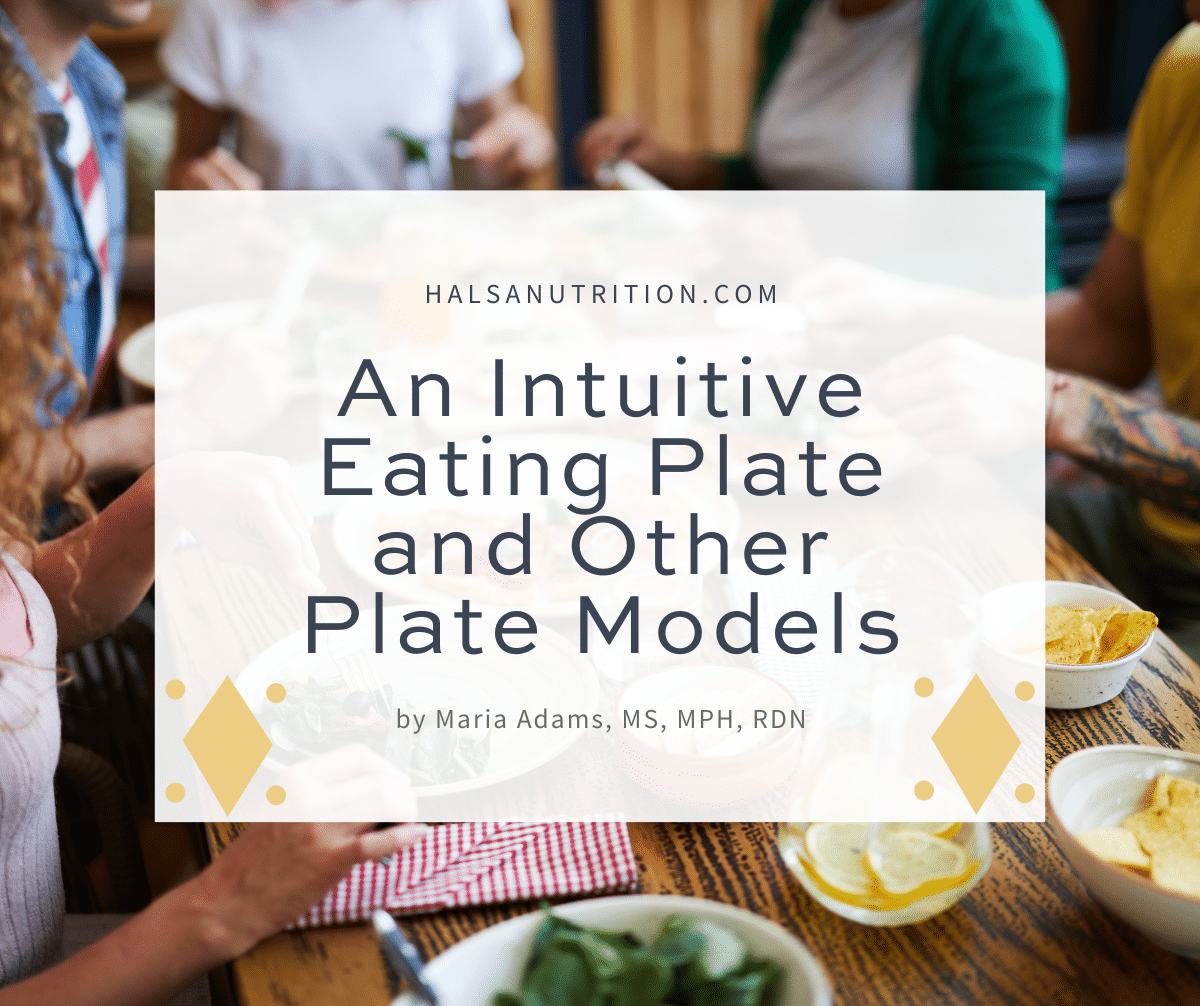
An Intuitive Eating Plate and Other Plate Models
There are many different plate models designed to help provide nutrition guidance. An intuitive eating plate is a helpful guide for those who are still working on their relationship with food.
Estimated reading time: 7 minutes
Have you ever wondered what you should be eating when you are trying to become a more intuitive eater?
While there is no official intuitive eating plate, it can be helpful to visualize such a plate when you are working on improving your relationship with food. This post shares one version of an intuitive eating plate, as well as other common plate models that are often used for nutrition guidance.
What are Common Plate Models?
There are many different plate “models” or “guides” out there. These visual representations are helpful for teaching nutrition because they show the food groups and proportions to include at meals.
Here are four models that are commonly used for guiding people on how to eat:
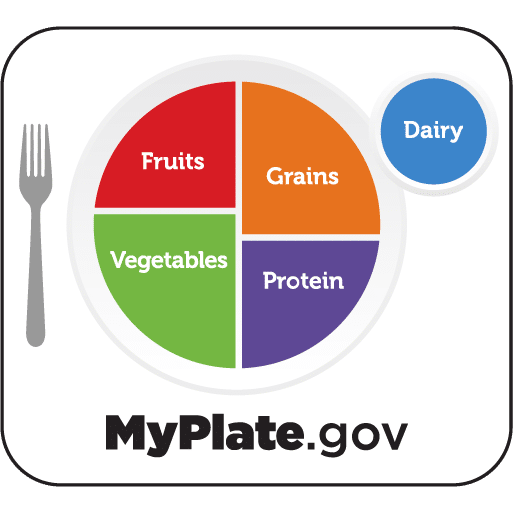
You may also have heard the phrase “make half your plate veggies.” This is a simple way to increase the vegetables in your diet while still enjoying your usual entree.
But for people who are still working on their relationship with food, whether they have disordered eating or feelings of guilt around food, these plates can easily be turned into diets or rules. In these situations, it can be helpful to take a step back and focus on letting go of the diet mentality before getting into nutrition. Getting back in touch with intuitive eating can help.
What is an Intuitive Eating Plate?
Intuitive eating entails listening to our body and honoring and trusting the signals it sends us. Dietitians Elyse Resch and Evelyn Tribole co-authored the book “Intuitive Eating”, which guides us through 10 principles that can help us become more intuitive eaters.
It’s not until we get to the last principle, “Gentle Nutrition”, that there is a focus on nutrition and what to eat. This is because focusing on nutrition too soon will turn intuitive eating into just another diet. Still, when introducing intuitive eating it can be helpful to have some visual guidance early on.
While there is no “official” intuitive eating plate, the below image shows one way to think of it.
With intuitive eating, the overall emphasis is on satisfaction. To get there you will want to start with foods that you have access to and from there choose foods that nourish you and foods that you enjoy. In addition, making sure you have enough food is essential. Even the most pleasure-inducing food won’t satisfy you if you are still hungry!
Components of An Intuitive Eating Plate
Therefore, the components of this intuitive eating plate include:
- Foods that you have access to. There is no need for fancy foods, just go with what you have!
- Foods that will nourish you. This means they provide the energy and nutrients that you need.
- Foods that you enjoy. While it’s unrealistic to think that every meal will be your favorite, hopefully, pleasure can be a component on your plate most of the time!
- Foods that satisfy you. This means choosing foods that satisfy you, but it also means eating enough total food!
(What is not included on these plates? Guilt and shame! Food should be enjoyed without the negative thoughts that often come along with diet culture. And if you do find yourself having negative thoughts or feelings, intuitive eating encourages you to respond with curiosity and compassion.)
Since we are all unique, an intuitive eating plate should be individual to you, both in what you choose and the amounts. And, of course, it can look any way you want. Sometimes you may choose all pleasure foods. Other times you may only have access to foods with low nutritional value. And that’s ok.
When to Use an Intuitive Eating Plate
An intuitive eating plate like this one can be helpful for those who are working on their relationship with food. People who have disordered eating habits such as food restriction or dieting, or disordered thoughts such as guilt or shame around eating, may benefit from visualizing the intuitive eating plate when making their meals.
Once a healthy relationship with food is established, you could use one of the more traditional models to help provide gentle nutrition guidance.
Individuals with Eating Disorders May Need More Structure
For those with an eating disorder, however, the intuitive eating plate may not provide enough structure during early treatment. Individuals who have been diagnosed with an eating disorder or think they may have an eating disorder should work with their healthcare team (doctor, therapist, and dietitian) and follow their recommended treatment plan.
Dietitians Wendy Sterling and Casey Crosbie developed the Plate-by-Plate Approach® to help guide nutrition needs during eating disorder treatment. This approach makes nutrition easy by providing a visual representation of what to eat instead of focusing on numbers, measuring, or counting.
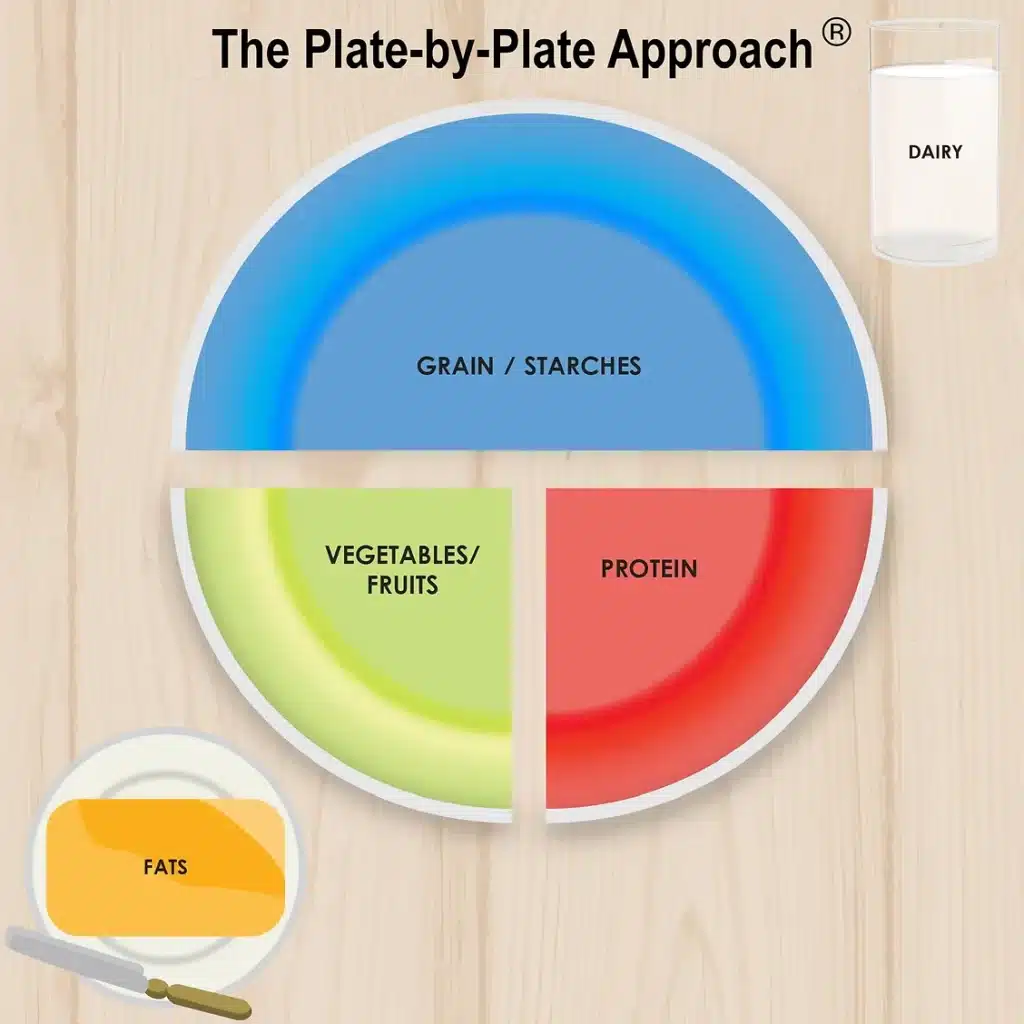
With the Plate-by-Plate Approach®, grains and starches often compose half the plate as depicted in the above image. There are also specific instructions to help make sure individuals are eating enough, such as being sure to use a 10-inch plate and filling it up.
Use the Plate Model That’s Right for You to Help Guide Your Meals
If you are working on intuitive eating and want a simple tool to help you guide your meals, an intuitive eating plate model can help. An intuitive eating plate reminds you to put focus on satisfaction while choosing foods that are accessible and provide both pleasure and nourishment. However, it also recognizes that there are no rules about what should be on your plate.
If you have an eating disorder or are working to recover from an eating disorder, you might need more structure to make sure that you are getting enough and to help you reestablish normal eating patterns. In these situations, the Plate-by-Plate Approach® approach may be helpful. Work with your healthcare team to find a plan that works for you (or your child).
Finally, if you are already eating intuitively and feel great about your relationship with food, one of the more common plate models–such as the US MyPlate or the Canadian Food Guide–may work for you. Variations such as the Athlete’s Plate and the Vegan Plate are also helpful guides in these situations.
Additional Resources
Books:
Disclosure: Some of the links below are Amazon affiliate links. This means that at no additional cost to you, if you click through and make a purchase I will earn a commission.
- Intuitive Eating, A Revolutionary Anti-Diet Approach, 4th Edition, by Evelyn Tribole, MS, RDN, CEDRD-S and Elyse Resch, MS, RDN, CEDRD-S, FAND
- How to Nourish Your Child Through an Eating Disorder by Casey Crosbie, RD, CSSD and Wendy Sterling, MS, RD, CSSD
- Gentle Nutrition by Rachel Harley, RD
Other Blog Posts You Might Like:
- Nourished Eating for Teens – A Visual Approach
- Disordered Eating – More Common Than You Realize
- Meal Satisfaction: 12 Ways to Increase It
- The 10 Principles of Intuitive Eating Help You Be Kind to Your Body
- Intuitive Eating for Teens
- Meal Prep and Intuitive Eating
1:1 Counseling
Work with a non-diet dietitian to help get the support you need to find food freedom and find a way of eating that works for you. Hälsa Nutrition is currently taking on new clients. Learn more here.
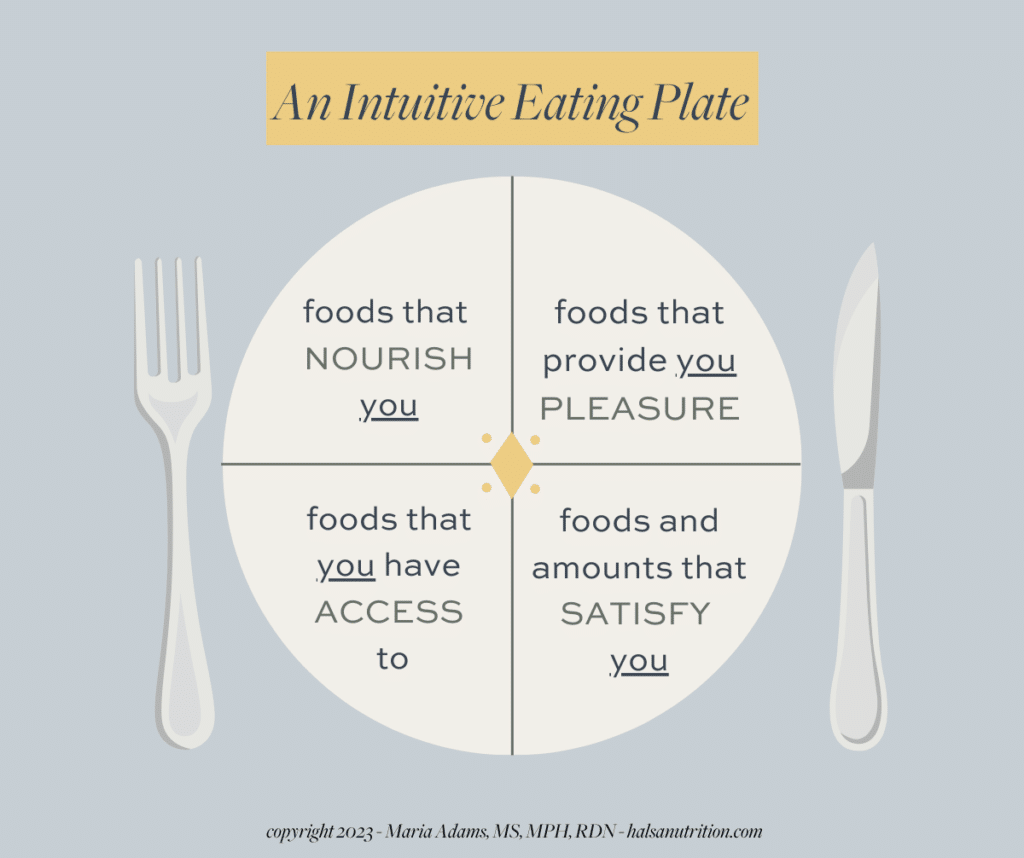
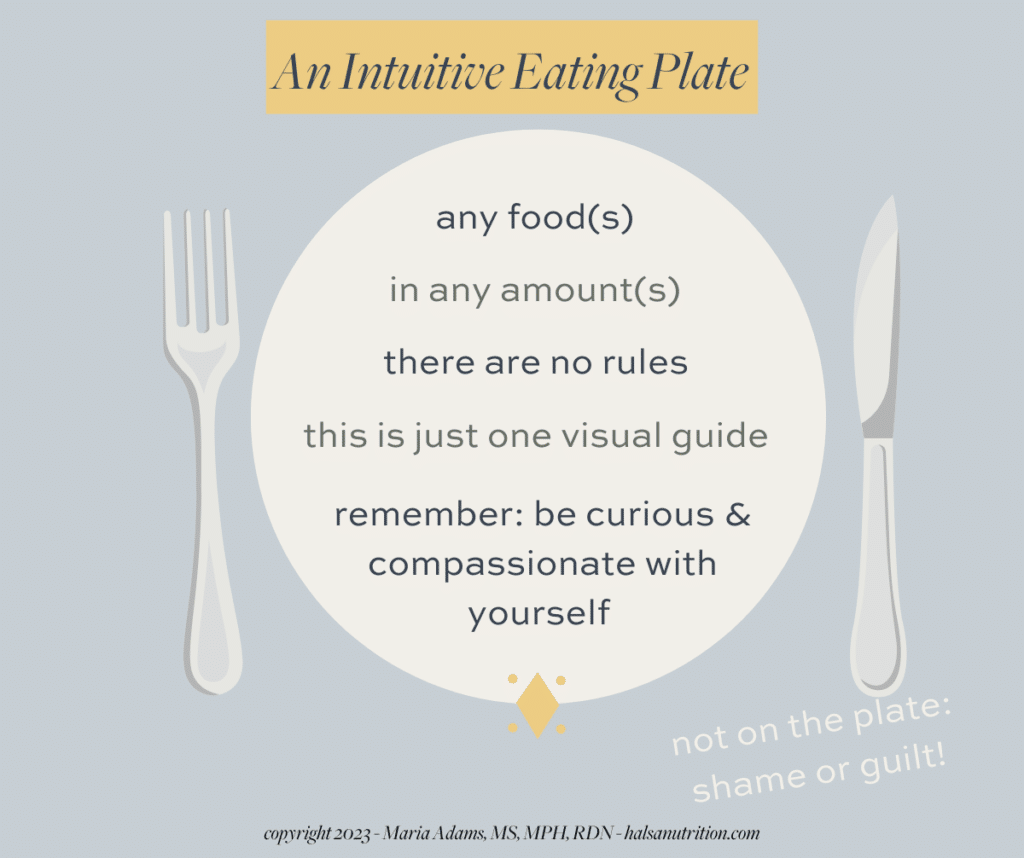
Leave a Reply